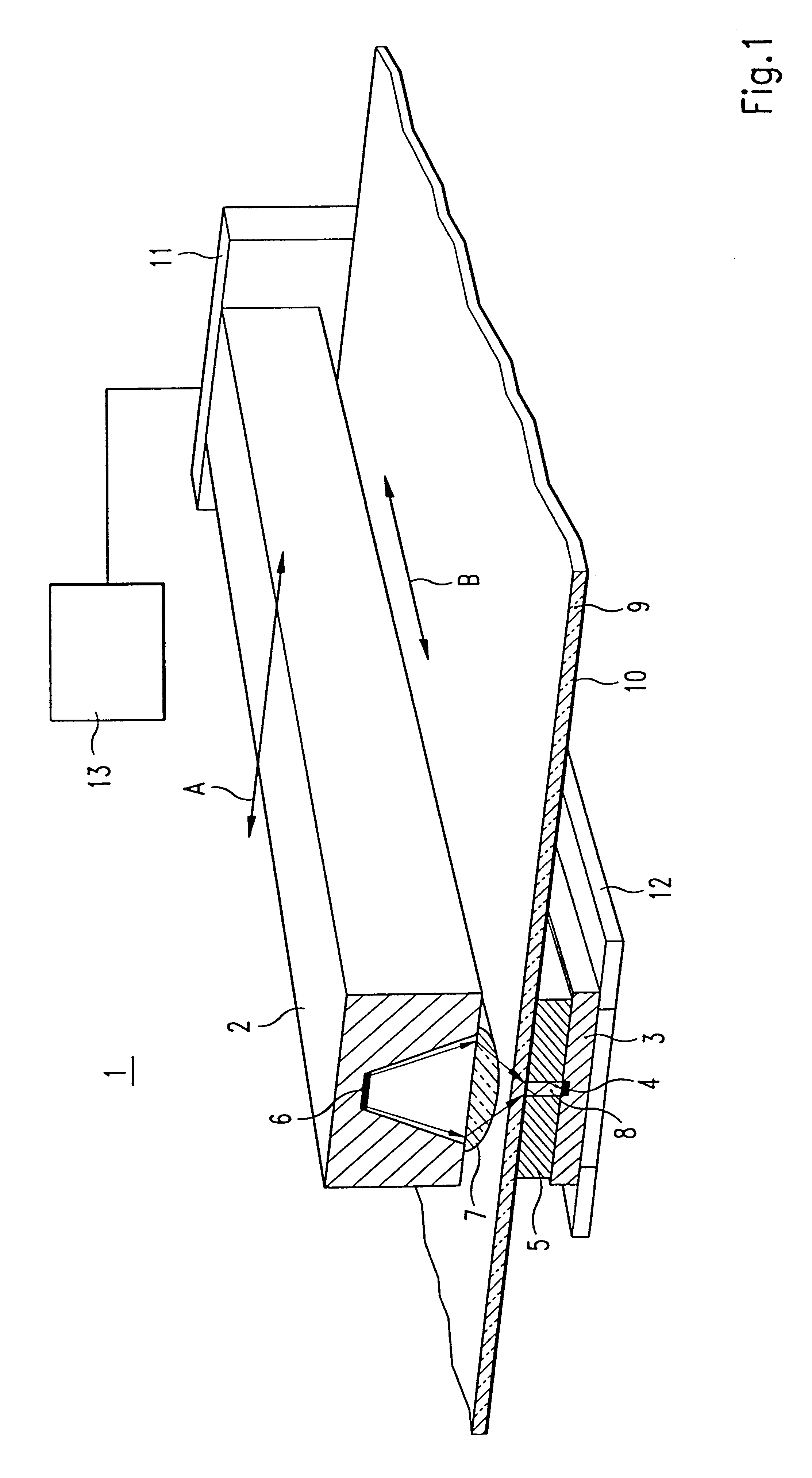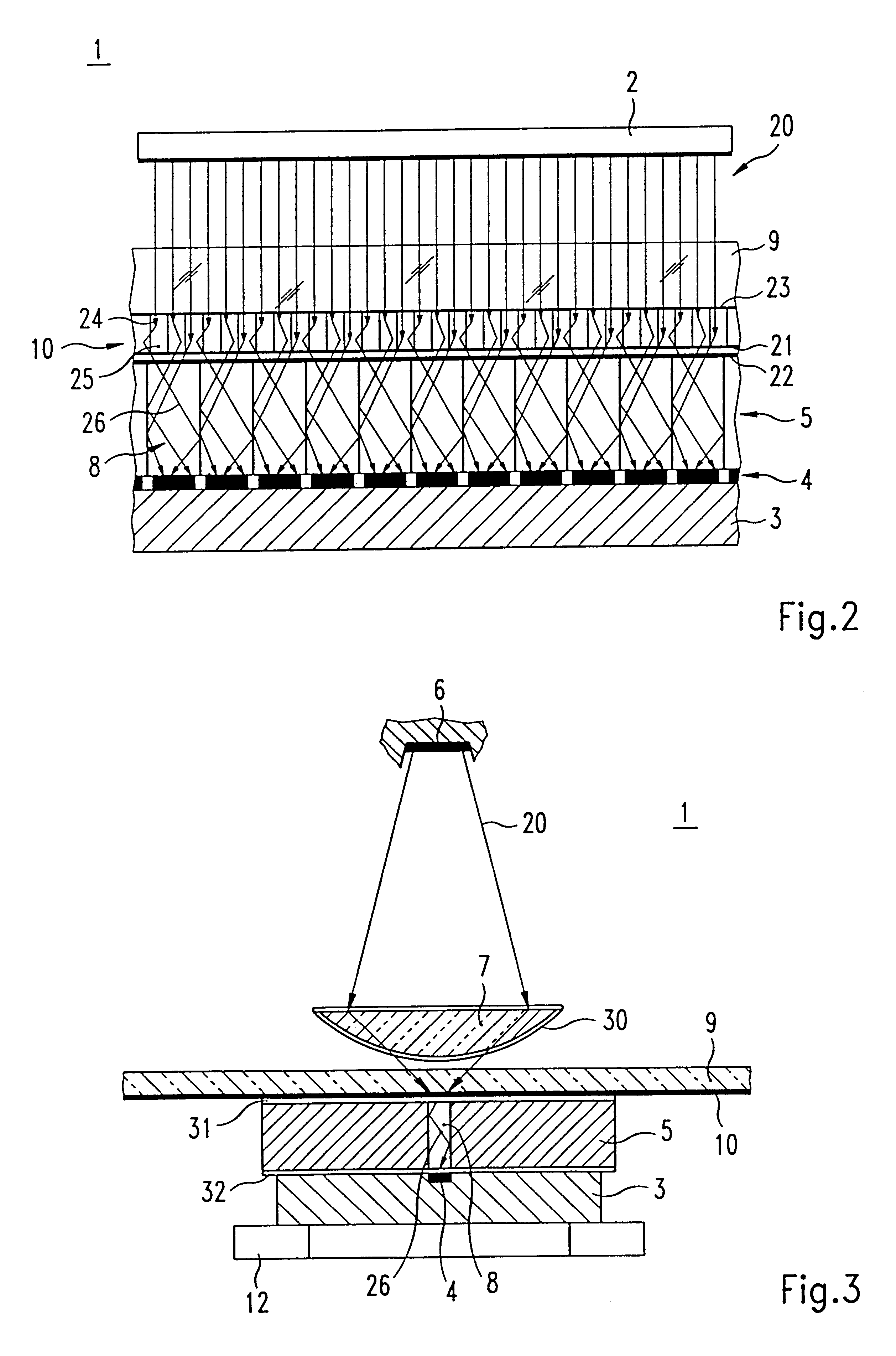Device and method for reading information stored in a phosphor layer
a technology of information storage and phosphor layer, which is applied in the direction of instruments, television systems, and television system scanning details, etc., can solve the disadvantages of light emitted by the radiation source and exciting the phosphor layer, introduce noise in the x-ray image, and disadvantages of filter disadvantages,
- Summary
- Abstract
- Description
- Claims
- Application Information
AI Technical Summary
Benefits of technology
Problems solved by technology
Method used
Image
Examples
first embodiment
FIG. 1 shows schematically a perspective diagram of the device according to the invention for reading information stored in a phosphor layer. A reading device 1 is used to read image information from a phosphor layer 10. The image information is produced by irradiating the phosphor layer 10 with x-rays. The reading device I includes a radiation source 2 which in this embodiment is implemented as a line light source having a plurality of laser diodes arranged side by side. The line light source 2 of the present example includes 4096 laser diodes arranged in parallel in a row. The laser diodes can be used to excite a single row of the phosphor layer 10. An exemplary laser diode 6 is shown in FIG. 1. The laser diodes of the line light source 2 are oriented perpendicular to the phosphor layer 10, so that the radiation emitted by the individual laser diodes impinges directly on the phosphor layer 10. The line light source 2 essentially extends across the entire width B used to store the ...
second embodiment
Reflective layers for reflecting the stimulating radiation 20 can also be placed at different locations in the reading device of the invention. Such reflective layers need not be placed between the phosphor layer 10 and the optical fiber arrangement 5 in the manner illustrated with reference to the embodiment of FIG. 2. FIG. 3 shows schematically a diagram of the reading device of the invention. The reading device 1 is shown as viewed along a row. One of the exemplary laser diodes 6 is illustrated, with the laser beam 20 being focused by the focusing lens 20 through the transparent carrier 9 on the phosphor layer 10. As mentioned above, the phosphor layer 10 is simulated by the stimulating radiation to emit an emission radiation which is conveyed through the optical fiber arrangement 5 to the linear CCD 3. One exemplary optical fiber 8 of the optical fiber arrangement 5 is illustrated in FIG. 3. The emission radiation 26 emitted by the phosphor layer is conveyed through the optical ...
PUM
 Login to View More
Login to View More Abstract
Description
Claims
Application Information
 Login to View More
Login to View More - R&D
- Intellectual Property
- Life Sciences
- Materials
- Tech Scout
- Unparalleled Data Quality
- Higher Quality Content
- 60% Fewer Hallucinations
Browse by: Latest US Patents, China's latest patents, Technical Efficacy Thesaurus, Application Domain, Technology Topic, Popular Technical Reports.
© 2025 PatSnap. All rights reserved.Legal|Privacy policy|Modern Slavery Act Transparency Statement|Sitemap|About US| Contact US: help@patsnap.com



